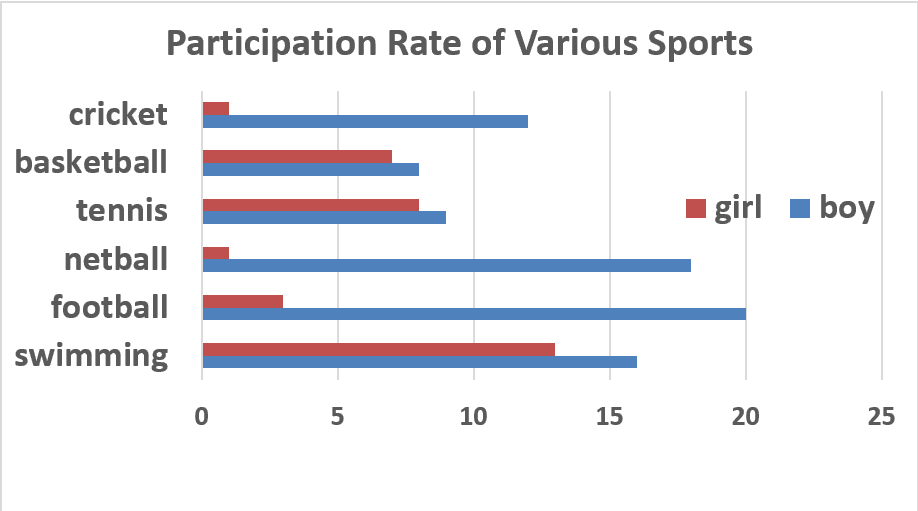托福备考是个长期的过程,而应试过程其实也需要一些小“心机”小技巧,今天小编给大家带来15条应试技巧助你托福再提10分,下面小编就和大家分享,来欣赏一下吧。
【必看】15条应试技巧助你托福再提10分
1.在听力完成后会有5秒倒计时,结束后开始计时10分钟的休息,休息完后让监考输入密码进入口语部分,按完第一个NEXT后别按第二个NEXT,这样中间就有无限的时间听别人答完所有的题。第1,2题也要做笔记,虽然短而且简单,但这样可以防止到时万一因为某个词而卡住。
2.答题时宁过勿缺,但如果最后差几秒又实在想不出,则可说:That’s about it (连读) OR That’s everything I can say about this topic .
3.有时可用and将两个同义词连接,这样既可强调要表达的意思,又可延长一倍的时间。
4.多用习语,口语词,gonna,wanna,有的词读的短而快,有些则长而慢,注意语音语调的变换。
5.一开始不要说出绝对数字,而说a few points,这样可以防止说不完。
6.多用被动和升调。
7.因为第1,2题要求说45’所以用一些opening会使这两道题比较稳妥。
8.在有阅读的题目中快速默读,但有不熟的单词要朗读。
9.3,4题中如果多说阅读中的内容会被减分,不要有什么in the reading passage之类的话。
10.不要喷麦,不要用一些不确定的词如something,someone,(主要是1,2题,并注意specific),有一些小的语法错误没有关系,发音不好没有关系。
11.阅读和听力可能出现2选1的加试。阅读题是可以来回改的,而听力只可以改最后一个,所以做阅读时应根据篇数来判断听力的篇数,并合理安排时间。
12.阅读和听力要早答,因为如果慢了则会受到别人口语的干扰。而中间休息的时间则应尽可能的延长,因为如果快了则会在写作时受到别人口语部分的影响。故TOEFL iBT总体应该遵循先快后慢的原则。
13.在托福考试的过程中要注意答全所有的题目。猜答案并不会扣分,千万别在答题卡上留下任何空白,如果你不会做,那就猜吧。
14.对容易的托福考试题目要快答。对那些你能保证对的题目要尽快答完,把剩下来的时间用在你认为比较复杂的题目上。
15.仔细填写答题卡。你必须认真填写答题卡。如果你想跳过一道难题,稍后再答的话,一定要记住不填那道题。
托福考试技巧广泛适用于各种基础的同学,不过大家尽量在托福练习中就熟悉这些考试技巧,不要等到应试时再手忙脚乱地去想去用,反而影响考试状态。
托福阅读真题原题+题目
Hunting is at best a precarious way of procuring food, even when the diet is supplemented with seeds and fruits. Not long after the last Ice Age, around 7,000 B.C. (during the Neolithic period), some hunters and gatherers began to rely chiefly on agriculture for their sustenance. Others continued the old pastoral and nomadic ways. Indeed, agriculture itself evolved over the course of time, and Neolithic peoples had long known how to grow crops. The real transformation of human life occurred when huge numbers of people began to rely primarily and permanently on the grain they grew and the animals they domesticated.
Agriculture made possible a more stable and secure life. With it Neolithic peoples flourished, fashioning an energetic, creative era. They were responsible for many fundamental inventions and innovations that the modern world takes for granted. First, obviously, is systematic agriculture — that is, the reliance of Neolithic peoples on agriculture as their primary, not merely subsidiary, source of food.
Thus they developed the primary economic activity of the entire ancient world and the basis of all modern life. With the settled routine of Neolithic farmers came the evolution of towns and eventually cities. Neolithic farmers usually raised more food than they could consume, and their surpluses permitted larger, healthier populations. Population growth in turn created an even greater reliance on settled farming, as only systematic agriculture could sustain the increased numbers of people. Since surpluses of food could also be bartered for other commodities, the Neolithic era witnessed the beginnings of large-scale exchange of goods. In time the increasing complexity of Neolithic societies led to the development of writing, prompted by the need to keep records and later by the urge to chronicle experiences, learning, and beliefs.
The transition to settled life also had a profound impact on the family. The shared needs and pressures that encourage extended-family ties are less prominent in settled than in nomadic societies. Bonds to the extended family weakened. In towns and cities, the nuclear family was more dependent on its immediate neighbors than on kinfolk.
1. What does the passage mainly discuss?
(A) Why many human societies are dependent on agriculture
(B) the changes agriculture brought to human life
(C) How Neolithic peoples discovered agriculture
(D) Why the first agricultural societies failed
2. The word precarious in line 1 is closest in meaning to
(A) uncertain
(B) humble
(C) worthy
(D) unusual
3. The author mentions seeds and fruits in line 2 as examples of
(A) the first crops cultivated by early agricultural societies
(B) foods eaten by hunters and gatherers as a secondary food source
(C) types of food that hunters and gatherers lacked in their diets
(D) the most common foods cultivated by early agricultural societies
4. The word settled in line 15 is closest in meaning to
(A) advanced
(B) original
(C) involved
(D) stable
5. According to the passage , agricultural societies produced larger human populations because
agriculture
(A) created more varieties of food
(B) created food surpluses
(C) resulted in increases in leisure time
(D) encouraged bartering
6. According to the passage , all of the following led to the development of writing EXCEPT the
(A) need to keep records
(B) desire to write down beliefs
(C) extraction of ink from plants
(D) growth of social complexity
7. The word chronicle in line 23 is closest in meaning to
(A) repeat
(B) exchange
(C) understand
(D) describe
8. According to the passage , how did the shift to agricultural societies impact people's family
relationships?
(A) The extended family became less important.
(B) Immediate neighbors often became family members.
(C) The nuclear family became self-sufficient.
(D) Family members began to wok together to raise food.
9. The author mentions all of the following as results of the shift to agricultural societies EXCEPT
(A) an increase in invention and innovation
(B) emergence of towns and cities
(C) development of a system of trade
(D) a decrease in warfare
10. Which of the following is true about the human diet prior to the Neolithic period?
(A) It consisted mainly of agricultural products
(B) It varied according to family size.
(C) It was based on hunting and gathering.
(D) It was transformed when large numbers of people no longer depended on the grain they grew
themselves.
PASSAGE 58 BABDB CDADC
托福阅读真题原题+题目
The first birds appeared during late Jurassic times. These birds are known from four very good skeletons, two incomplete skeletons, and an isolated feather, all from the Solnhofen limestone of Bavaria, Germany. This fine-grained rock, which is extensively quarried for lithographic stone, was evidently deposited in a shallow coral lagoon of a tropical sea, and flying vertebrates occasionally fell into the water and were buried by the fine limy mud, to be preserved with remarkable detail. In this way, the late Jurassic bird skeletons, which have been named Archaeopteryx, were fossilized. And not only were the bones preserved in these skeletons, but also were imprints of the feathers. If the indications of feathers had not been preserved in association with Archaeopteryx, it is likely that these fossils would have been classified among the dinosaurs, for they show numerous theropod characteristics. Archaeopteryx were animals about the size of a crow, with an archeosaurian type of skull, a long neck, a compact body balanced on a pair of strong hind limbs, and a long tail. The forelimbs were enlarged and obviously functioned as wings.
Modern birds, who are the descendants of these early birds, are highly organized animals, with a constant body temperature and a very high rate of metabolism. In addition, they are remarkable for having evolved extraordinarily complex behavior patterns such as those of nesting and song, and the habit among many species of making long migrations from one continent to another and back each year.
Most birds also have very strong legs, which allow them to run or walk on the ground as well as to fly in the air. Indeed, some of the waterbirds, such as ducks and geese, have the distinction of being able to move around proficiently in the water, on land, and in the air, a range in natural locomotor ability that has never been attained by any other vertebrate.
1. According to the author, all of the following evidence relating to the first birds was found EXCEPT
(A) nesting materials
(B) four skeletons in good condition
(C) two fragmented skeletons
(D) a single feather
2. The word preserved in line 8 is closest in meaning to
(A) confused with others
(B) gradually weakened
(C) protected from destruction
(D) lost permanently
3. It can be inferred from the passage that the Archaeopteryx were classified as birds on the basis
of
(A) imprints of bones
(B) imprints of feathers
(C) the neck structure
(D) skeletons
4. The word they in line 10 refers to
(A) indications
(B) fossils
(C) dinosaurs
(D) characteristics
5. Why does the author mention a crow in line 11?
(A) to indicate the size of Archaeopteryx
(B) To specify the age of the Archaeopteryx fossils
(C) To explain the evolutionary history of Archaeopteryx
(D) To demonstrate the superiority of the theropod to Archaeopteryx
6. It can be inferred from the passage that theropods were
(A) dinosaurs
(B) birds
(C) Archaeopteryx
(D) crows
7. The word constant in line 16 is closest in meaning to
(A) comfortable
(B) combined
(C) consistent
(D) complementary
8. The author mentions all of the following as examples of complex behavior patterns evolved by
birds EXCEPT
(A) migrating
(B) nesting
(C) singing
(D) running
9. The word attained in line 23 is closest in meaning to
(A) required
(B) achieved
(C) observed
(D) merited
PASSAGE 59 ACBBA ACDB
15条应试技巧助你托福再提10分相关文章:
★ 升入高三主题班会





